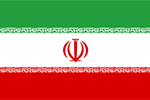
Population
85M+
CHRISTIAN PERSECUTION STATUS
extreme
Persecution
CHRISTIAN POPULATION
<1%
Status of
the church
Shiite Islam is the official religion of Iran and accounts for 90% of the population. Another 5-10% are Sunni. Christianity, Judaism, and Zoroastrianism are officially recognized in Iran and even have seats in parliament, but other religious sects are not. Armenian and Assyrian (Nestorian) Christian churches are tolerated but are tightly controlled. Churches are banned from serving those from Muslim backgrounds. Amazingly, many people are coming to faith in Iran, and a growing network of underground churches meets secretly.
The Iranian constitution grants freedom of religion. Article 23 states, “The investigation of individuals’ beliefs is forbidden, and no one may be molested or [reprimanded] simply for holding a certain belief” (Amnesty International). But there have been repeated incidents of executions of Iranian Christians for apostasy in the past several years.
More than 40% of Iranians are under 25 but face a lack of opportunity. Many seek work overseas. Others turn to drugs; because of its proximity to Afghanistan’s poppy fields, Iran has one of the world’s highest rates of opiate addiction. The country is also home to hundreds of thousands of Iraqi and Afghan refugees, and reports of human trafficking have increased in recent years.
Location
Prayer points
What our viewers are saying